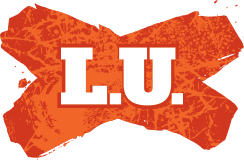Is Sharks FC the right option?
ByLes Murray
10 Dec 2014 - 10:43 PM UPDATED YESTERDAY 11:05 PM
After the appointment of rock star football administrator Lyall Gorman as chief executive of Cronulla Sharks rugby league club it did not take long for speculation to emerge that the Sharks will be eyeing for running an A-League club before long.
Gorman confirmed that the story is in fact more than speculation by declaring in
Fairfax Media (on 9 December) that the Sharks will be ready to launch a football subsidiary in the 2017 A-League season.
Should this excite one's football instincts?
First, there is some irony here. Not long ago the Penrith Panthers NRL club made overtures to buy the Western Sydney Wanderers licence from FFA, at the time the Wanderers being run by Gorman.
The Panthers approach was roundly rejected on the basis that FFA did not want an A-League club owned by an entity from the bosom of a rival code (despite the fact that it had already allowed this with the ownership of the Newcastle Jets).
How would it now be therefore acceptable that the Sharks should own an A-League club?
Second, Gorman sees an A-League club based in the heart of the Cronulla-Sutherland district, extending its antennae south to engulf the Illawarra. I would be wary of this.
There is some history of football trying to extend its horizons into the Shire which doesn't make for a stirring narrative.
In 2001 the NSL's
Sydney Olympic, a nomadic club forever looking for its right geographical home, moved to the Shire, playing its home games at Toyota Park. It based its argument for the move on the fact that the district boasted - and still does - of having the biggest number of junior players in the land. The club even changed its name to Olympic Sharks.
However, the experiment failed and the venture was short-lived. In 2003 Olympic moved again, to Jubilee Oval in Kogarah and eventually back to Belmore Sports Ground, a place close to the heartland of the club's traditional supporters from the Greek community.
There was a reason for the failure of the Cronulla experiment, which lay in the cultural mix and identity of the region. In its various previous homes, Leichhardt Oval, St George Stadium in Rockdale, Belmore or, even for a time, Sydney Football Stadium, Sydney Olympic lived in multicultural heartlands that were easily accessible for its natural fans and fans of football.
Cronulla and its environs, populated essentially by an Anglo-Celtic mono culture honed on rugby league, did not have a natural appetite for football.
The supposition that a large football playing junior population would translate naturally to a large fan base for an elite football club was misplaced. It never has in the past and neither should it be supposed that it will in the future.
That said, it makes sense to suggest that ultimately the A-League will need and will have a third Sydney club. I believe it is inevitable. The question is where will it be based and what will be its geographical identity.
The Wanderers experiment has been a monumental success, primarily because it tapped into a vast multi-cultural heartland, a part of Sydney where natural football fans live in their teeming numbers.
The one area left in Sydney where a similar story can be told is in the city's south and south east, from Rockdale to Sutherland, a population base of nearly 500,000. North of Botany Bay the region is thoroughly multi-cultural, throbbing with a love and hunger for football. Basing an A-League club there is a story begging for success.
But not a club centred in Cronulla. The epicentre of this opportunity is probably Rockdale, or Brighton, or Hurstville.
Among the headiest days of the NSL were when Sydney Olympic in the late 1980s played its home games at St George Stadium in Bestic Street, Rockdale, large, boisterous crowds and atmospheres to remember and savour.
That stadium is now just about derelict. A huge financial investment would be needed to bring it back to life.
But it may be an investment worth risking. That is if FFA wants to repeat the wonderful Western Sydney Wanderers story.
It is there, begging to be told.
